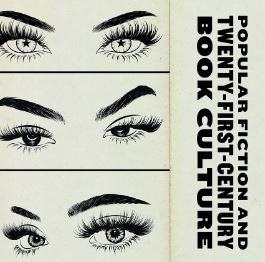Kim Wilkins, Beth Driscoll, and Lisa Fletcher. Genre Worlds: Popular Fiction and Twenty-First-Century Book Culture. University of Massachusetts Press: Amherst, 2022. 272 pages. US $28.95 (paperback). ISBN: 9781625346612.
In 2017, I reviewed Jeremy Rosen’s exploration of genre and late 20th/21st century publishing in Minor Characters Have Their Day for SHARP News. So it seems only fitting that 5 years later I have the opportunity to review Genre Worlds: Popular Fiction and Twenty-First-Century Book Culture by Kim Wilkins, Beth Driscoll, and Lisa Fletcher. Genre Worlds is a more expansive examination of genre in popular fiction than the work of Rosen and many others, and provides an important framework for the study of genre fiction. Genre Worlds follows an organizational structure that addresses the theory of genre worlds, relationship to the publishing industry, transnational and transmedia genre worlds, community and creativity, genre sociality (online and in-person), the texts themselves, concluding with genre worlds and change.
The writing style and cover of this book are reason enough to add it to your shelf. The black-and-white drawings and chunky typography with red accents are reminiscent of the pulp fiction covers that encapsulate the object of study in the book’s scholarship. This book also has the best prologue to an academic text that I have ever read, with prose and content that mimics the object of study: genre fiction. For example, the authors address the plot, characters, and setting of this book itself through beautiful passages like these:
“Our setting is the twenty-first century. This is something of a dystopia, at least if you listen to some publishing industry pundits. Ebooks have killed publishers and brick-and-mortar bookstores. Amazon rules us all. The novel is in decline at the same time as video streaming and social media are on the ascent, suckling a hollow-eyed zombie culture whose sole interest in books is speculating which teen star will play the main character in the inevitable screen adaptation …. There is industry rivalry as established publishers scramble to adjust to new industrial conditions, and savvy new entrants exploit gaps. Who will survive? There is competition between authors as the gap between bestsellers and the long tail grows ever wider… There are harassment, inequality, and structural disadvantage; activism and backlash; progress and conservatism. Imprints are born and die, subgenres and tropes brighten and then fade, writers flare into public consciousness and then burn out, series fill bookstore windows and then stuff thrift-store bins. These are genre worlds. Are you hooked yet?”
p. xi
Genre worlds are defined as “a collection of people and practices that operates according to established and emerging patterns of collaborative activity, in order to produce the texts that make popular genres recognizable” (p. 2). The authors address genre worlds as an extension of Howard Becker’s “art worlds” and with a focus (like Becker) on the humans involved. While Becker’s art work is the theoretical framework most important to Genre Worlds, the book also draws from others, like James Gee’s concept of affinity spaces as theory for the idea of affective sociality of genre worlds. Genre Worlds utilizes mixed methods, with an in-depth case-study approach involving a sample of 30 titles (one from each of the three main genre categories). As part of the case studies, Driscoll, Wilkins, and Fletcher conducted interviews with people associated with the case study books (authors, editors, agents, etc.) Additionally, there were other interviews to give general insight into genre worlds, culminating in 78 interviews for the project. Genre Worlds describes the dataset for the research as “medium” because it is “not massive to the point of being unable to be read but is also larger than a study of a single book or author” (p. 25).
Driscoll, Wilkins, and Fletcher examine how contemporary genre fiction is produced and circulated, focusing on fantasy, romance, and crime as overarching genre fiction categories. Fantasy can be synonymous with speculative fiction and includes horror and science fiction; similarly, crime fiction encompasses thrillers, detective mysteries, etc. I especially appreciate the holistic approach that the authors have taken to examining genre worlds, across the layers of industrial, social, and textual aspects. Driscoll, Wilkins, and Fletcher also take great care to see the value in genre fiction rather than dismiss them because of their popular appeal and lack of perceived “literary-ness.” In fact, the authors argue compellingly that tropes, text conventions, and repetition in genre fiction help supply expectations, cues, and communication between the author and reader. Genre Worlds also spends ample time on key aspects of the contemporary genre fiction ecosystem, such as self-publishing, crossmedia, and social media.
In the words of Driscoll, Wilkins, and Fletcher, “This is twenty-first-century publishing, and while its teetering, bat-infested gothic towers may give you pause, they also fire your imagination, inspire you, and thrill you.” (p. 198). Genre Worlds will hook you and enlighten you, offering a compelling investigation of popular fiction in the twenty-first century.
Rachel Noorda, Portland State University


